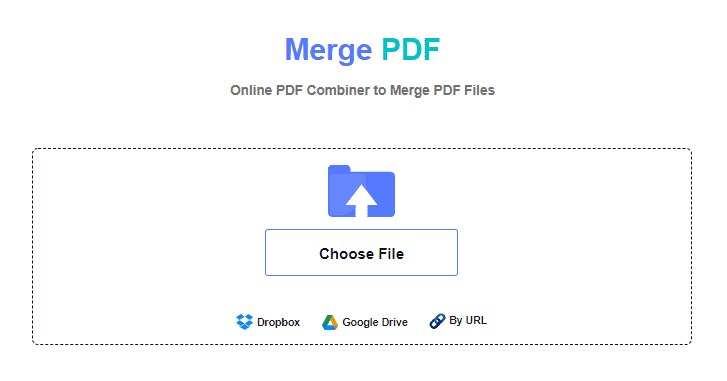Online document distribution is standardized on Portable Document Format (PDF) files. They find use throughout fields, from educational materials to academic studies.
The widespread use of PDFs may be attributed to their convenience. The fact that anybody can see them makes them ideal for spreading to those who lack access to more advanced software. However, search engine optimization is one area where PDFs may fall short (SEO).
Contents
Why should PDFs be optimized for SEO to get a better search engine rating?
Your PDF content marketing strategy will only be crawlable by search engines if you include key indicators that the file is intended to be viewed as a website, not a document.
Title tags, meta descriptions, and headers in the body of the text are all examples of on-page SEO features that aid search engines in determining the topic of your page and returning relevant search results when someone types in a phrase related to your site’s content into Google or Bing.
Optimization is a must if you want your PDFs to rank better in search results for specific keywords relating to your sector or the products you provide.
PDF Search Engine Optimization:
The following are some of the most effective techniques for enhancing the visibility of your PDFs in search results:
1. Use Keywords in the Title and Body of Your Document
The first advice for SEO is to include keywords and phrases in the title and body of the page. Use search engine optimization (SEO) and keyword research (keyword research) related keywords and phrases throughout your PDF content.
Words should be chosen with the PDF’s theme in mind. Don’t simply throw in keywords at will; research their relevance to your topic beforehand. Don’t be vague; explain yourself using terms that fit the situation.
“SEO” stands for “search engine optimization.” Suppose you want your file to appear in search results when users type in your keyword and use it in the file’s name and extension. Don’t overstuff with too many irrelevant keywords; this might backfire by having readers think adversely of your site.
2. Minimize File Size for Quicker Downloading
The size of the PDF may be decreased by compression. This will help your PDF load quicker and save bandwidth for you and your readers. Large photos, embedded fonts, tables, and metadata may all contribute to a file’s overall size, so be mindful of that.
Avoid extraneous whitespace, data, embedded fonts, and transparency, contributing to poor loading times for consumers with slower internet connections.
3. Merge PDFs
Many may not realize it, but combining PDFs might help decrease their size. With an online merge PDF tool, you may combine twenty files on the same topic into one.
This online merge PDF Tool allows users to combine multiple PDF files easily. It is a very reliable and convenient tool to use. Moreover, you can upload multiple pdf files at once and can re-order the files according to your needs. It’s a completely free tool to use with a very user-friendly interface.
This is a fantastic addition to the growing set of resources available to digital marketers and SEO specialists for merging PDF files without the need for additional software. Instead of manually merging each PDF into a single document, you can visit their website, upload the files you want to combine, arrange them in the desired sequence, and click the “Merge Files” option.
Even after merging all of the files, you may still find that using such a program to compress them is helpful. This leads to decreased waiting times and enhanced SEO performance.
4. Include both internal and external links when necessary
Use hyperlinks, internal and external, as appropriate in your PDF document.
Internal Link
Words inside the text may be clicked on to take you to other parts of the page. To help your visitors access additional information on a similar subject, such as SEO or social media, you may want to include an internal link to a phrase mentioned in a paragraph but not in the title.
Because search engines won’t have to spend time deciphering the context of each phrase, your sites will be indexed more quickly.
External Link
When you include useful, external material from other websites into your own, you improve your search engine rankings and provide a better user experience. This is particularly useful if you think your PDF reader would desire additional information after reading a particular section.
Instead of making readers navigate multiple pages, include an external link after each section to get further information quickly. When particular keywords exist in several places across your content, you should think about employing internal and external linking strategies.
5. Incorporate Extra Text/Alt Text For Images
A website isn’t complete without some quality visuals. They aid in communication, tell tales, and interest viewers. However, optimizing photos for search engines is not always easy. Alt text with keyword-rich descriptions that emphasize the image’s theme and substance is the best approach to do this.
Additional language, or alt text, is required for search engines (and people) to comprehend your picture and what it is attempting to represent. An example of alt-text might be “This photo depicts our new office building” or “Our team is hard at work on the launch of our new product.”
Because Google and other search engines downgrade results that include duplicate information, we wrote original captions for each image.
6. Include Unique Meta Title And Description to your File
The PDF would benefit from a more optimized title. Don’t make it overly lengthy, but include keywords related to your product. Similar to other sections of your site, this one should be brief.
Include your brand name prominently inside the first few words of your title since this will be seen anytime someone shares your page on social media or in Google search results.
7. Optimized Meta Title and Description
Your file’s description should be keyword-rich, but it should also be easily understandable and offer information about its contents. Remember that the first 50 characters are the most weighted when determining search engine rankings. To maximize its effectiveness, the most important term or phrase should be placed near the beginning of the description as feasible.
Keep in mind that Google only shows 160 characters of text in its search results, so any extra phrases should be concise and engaging.
9. Prepare thoughtfully for the length of your PDF content.
A PDF’s length is a factor that should not be disregarded. Get the most out of your time and effort by writing between 1,000 and 2,000 words.
As an example, ten pages would be an ideal length for an eBook on using data science to identify high-paying employment in the job market. This will provide suitable material for your readers without overwhelming them.
The goal is not to produce a single massive slab of writing but rather a collection of shorter pieces that each address a specific subset of your larger research question or subject (this also makes it easier on the eyes).
Long texts may be divided into chapters or parts to facilitate the needs of readers seeking an overview before delving into specific topics.
10. Make Use Of Section Titles And Headings
Use headers, subheadings, and bullet points to keep lists, hints, actions, etc., well-organized. First, use headers, subheadings, and bullet points to divide your paper into manageable chunks.
Headings
The headers of each subsection need to be clearly labeled. These will allow readers to skim articles more efficiently by allowing them to go from one part to the next without reading the material.
It’s also a lot less work for spiders that index the web. For instance, Google relies on headers to understand the structure of a page; if there aren’t any, or if they’re all at the same level, the search engine may interpret your content as a single block of text rather than a collection of related themes.
Subheadings
Subheadings, similar headers but smaller and nested within the other headers, may be used to split the information in each section further. In addition to helping your readers skim your material more quickly, subheadings are also helpful since they are visual separators between distinct themes within the same topic area.
Conclusion
If you want to make your PDFs more search engine optimized, the strategies and advice we’ve discussed here are great places to start. The bright side is that these alterations may be made by anybody, regardless of their degree of technical knowledge.
If you want to take things further, you may crawl your existing PDFs using a program like Screaming Frog Spider to find accessibility problems and broken connections. Linking out from your PDFs is a great idea, and so is creating an XML sitemap.
Also, Read
Top 5 PDF Splitter Tools for Digital Marketers
How to Create New Layer From Selection in Gimp
Advantages And Disadvantages of HTML You Should Know
eCommerce Facebook Ads Funnel | A Comprehensive Guide!
WordPress Page Not Found After Publish? Easy Fix
Webpage Is Currently Unable To Handle This Request. HTTP error 500 Fix

